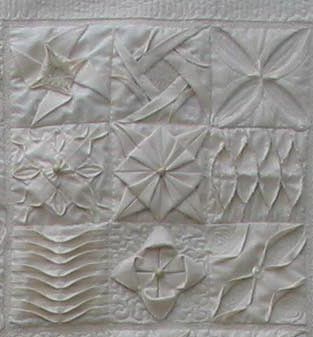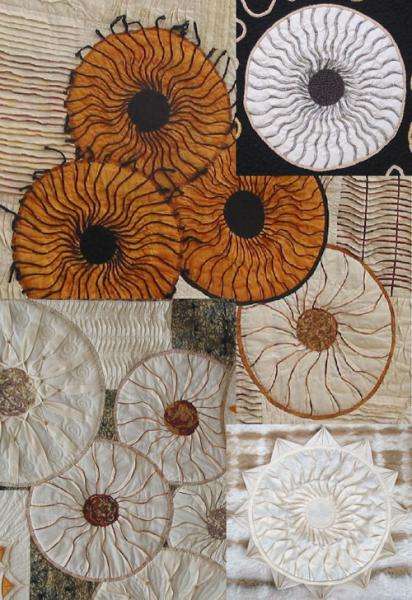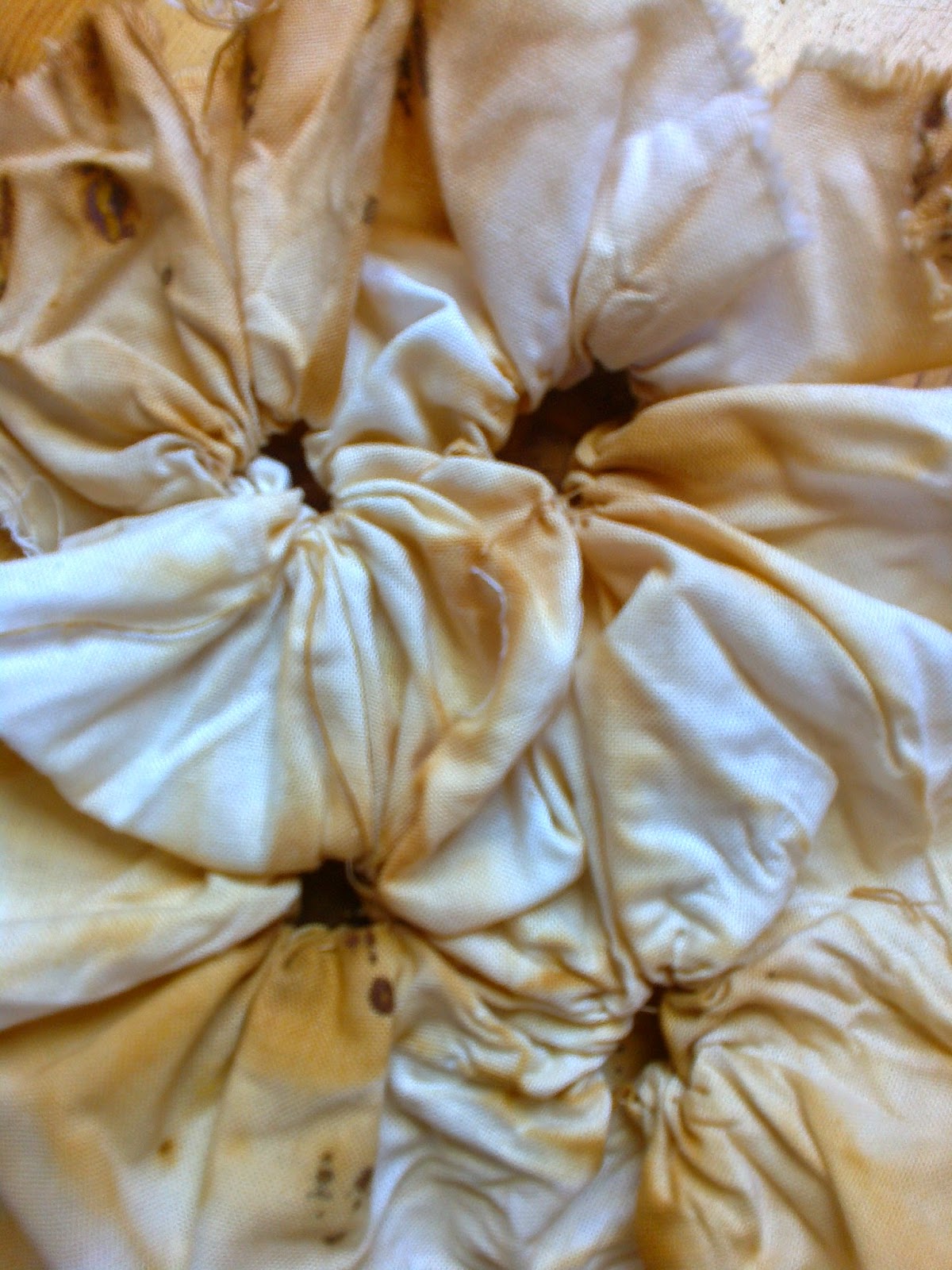Known as the Muslin Mistress Jenny obviously has a reputation for her expertise in the field of creating textural surfaces. While the procedure for making the pieces concentrates on detail and accurate cutting and sewing I was heartened to read
her quotes , 'Mistakes do not matter the result is just different' from Tucks, Textures and Pleats and 'You can't go wrong, it's just different' from Tucks and Textures Two, St Richard's Press Limited. The sense of reality that one gets from such remarks and the images of some of Jenny's clothing designs also reveals a sense of fun and enjoyment.
 |
| Suduko - whole |
 |
| Suduko detail |
The designs that I have chosen to include are; All Squared Up in which the striking black and white contrasts are used to explore apertures and layers being peeling back. Jenny's generosity of information is prevalent on her web site and would encourage anyone to have a go with the clear instructions and teasing combinations.
 |
| All Squared up |
Michael Brennand-Wood
 |
| Broken English 73 x 95 x 4, 1981 |
I have encountered difficulty in get images of the following pieces so have given a description and a web link
The light is only perfect for a very short time 1994 reminded me of the sample pieces we were asked to put together in Chapter 7. It shows how small pieces carefully collected can make an impact that as Aristotle noted , 'The whole is greater than the sum of the parts'. In the past I have preferred to set out to make a whole piece rather than produce lots of samples but this seems to present a way where you can have the best of both worlds.
Imaginary Landscape Rise and Fall 1999 has a combination of movement and symbolic shapes that have a textural quality.http://brennand-wood.com/pics/022.html
Wayne Higby
I became aware of the work of Wayne Higby following a visit to the Renwick Gallery in Washington D.C. in 2009. My interest in geology and landscape was immediately attracted to his incorporation of these aspects in his ceramics. Since that introduction it has been fascinating to investigate the wide range and scale of his work. The textural surfaces he achieves through a range of ceramic medium surely holds a parallel to what we strive for in textiles and in particular with this module.
Focusing on landscape for a source of inspirations the size of his pieces vary from small vessels and tiles to larger architectural pieces that make their own landscape such as the series Earth Clouds. Higby says of his work that:
"I strive to establish a zone of quiet coherence – a place full of silent, empty space where finite and infinite, intimate and immense intersect."
This core value is, for me, apparent across all samples and sizes of his work and one I would love to aspire to.
In the late 70's his interest in Chinese porcelain and Raku techniques developed in a life time of studying and exploring the timeless possibilities of this technique.
In the late 70's his interest in Chinese porcelain and Raku techniques developed in a life time of studying and exploring the timeless possibilities of this technique.
While his smaller pieces are often identifiable as ceramic vessels Higby often uses the shape to explore the imagery that inspires him rather than the utilitarian function of the vessel
Stone Gate, shown, below explores the use of space to draw the eye and give contrast to the detail and texture that surrounds it. Again sadly I cannot download images but the following connection should take you to a site.
http://antiquesandthearts.smugmug.com/Covers/Higby/
Stone Gate, shown, below explores the use of space to draw the eye and give contrast to the detail and texture that surrounds it. Again sadly I cannot download images but the following connection should take you to a site.
http://antiquesandthearts.smugmug.com/Covers/Higby/





















































